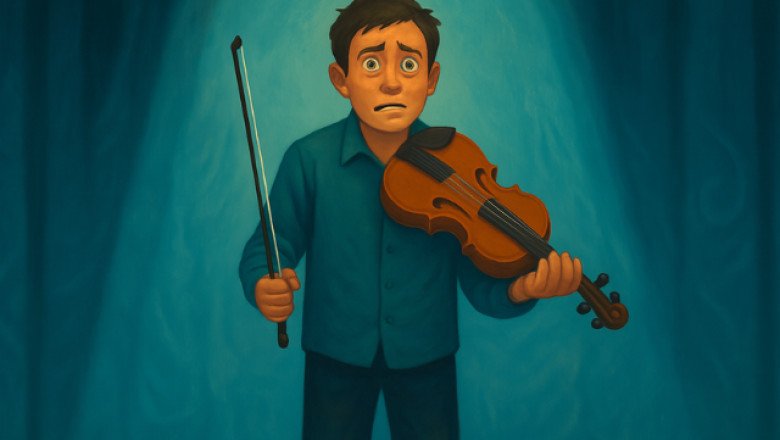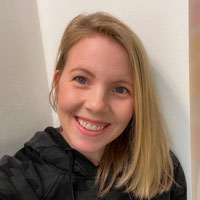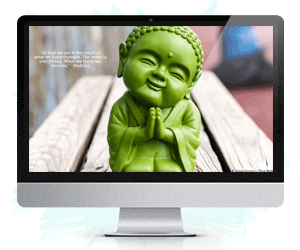
views

“You gain strength, courage and confidence by every experience in which you really stop to look fear in the face.” ~Eleanor Roosevelt
There’s a quiet moment before the spotlight hits when everything in your body wants to run.
Your hands tremble. Your voice tightens. Your breath shortens, even though the room is still. You love what you do—you’ve trained, practiced, prepared—but suddenly, it’s like someone else is in your body. Your skills vanish. Your confidence implodes.
That’s the yips.
And if you’re an artist, musician, writer, teacher—anyone whose work lives in public view—you’ve probably met them too.
For me, the first time the yips showed up, I was about ten years old, standing on a Little League pitcher’s mound. I had a strong arm and a real love for the game, so they made me the pitcher.
It felt like an honor—until it became a nightmare.
I couldn’t throw a strike. Not one. I walked batter after batter. The harder I tried, the worse it got. My coaches shouted. My teammates rolled their eyes. And worst of all, I didn’t know why it was happening. I knew how to pitch. I wanted to pitch. But my body wouldn’t cooperate.
My confidence didn’t just erode—it imploded.
That experience carved something into me, and years later, it returned in a different form—on stage, with a viola in my hands.
I had taken up guitar earlier and played in public a few times. A little nerves, sure, but nothing overwhelming. But the viola was different.
The viola wasn’t just an instrument—it was a commitment. I loved the sound, the subtlety, the range. But the moment I sat down to play chamber music or solo pieces—especially in front of discerning classical audiences—I froze.
My bow hand would shake uncontrollably. My tone would collapse. My breath shortened. My fingers, steady in rehearsal, betrayed me under pressure. It wasn’t just a little stage fright. It was full-body paralysis. And I wasn’t just nervous—I was ashamed.
I could feel the others around me adjusting their playing, trying to stay in sync, politely pretending not to notice the scraping sound of my trembling bow. I wasn’t just failing myself—I felt like I was slowly unraveling something beautiful we had built together.
That shame lasted longer than any applause ever could.
Eventually, I stopped performing. It hurt too much.
What’s strange is that I can still play old-time fiddle music in public. Ozark waltzes, hoedowns, reels—I can play those in front of a crowd with energy and joy.
Why?
Because people are moving. They’re dancing. They’re smiling. There’s an exchange happening—call and response, energy to energy. No one’s looking to critique every phrase. They just want to feel alive.
That shift—from judgment to participation—made all the difference.
It was my first clue that the problem wasn’t just about nerves. It was about dissonance.
What I didn’t understand as a kid—but see now in myself, my students, and even my own children—is that the yips aren’t just performance anxiety. They’re the outward symptoms of cognitive dissonance: the mental and emotional strain that happens when who we believe we are doesn’t match what we’re experiencing.
This dissonance doesn’t just trip us up. It can make us doubt the very core of our identity. And in creative work, that doubt can be devastating.
Over the years—as a filmmaker, teacher, and musician—I’ve seen these patterns again and again:
You know you’re good. But in that crucial moment, something inside shuts down. The disconnect feels like failure, even if it’s just fear.
We crave authenticity. But the moment we feel observed, we retreat into safe ideas and bland choices.
You believe in the work, but a voice in your head tells you it’s not important. That voice keeps you from finishing—or from starting at all.
Even lifelong learners fall into this trap. Especially those of us with experience. We forget how to be beginners again.
The inner identity and the outer reality don’t match. That gap becomes shame—and shame leads to silence.
You want input, but feel threatened by it. This tension keeps you isolated, even as you long for connection.
You teach balance but live exhaustion. (I’ve done this one far too many times.)
Here’s what I’ve learned after a lifetime of living with this pattern: You don’t conquer the yips by trying harder. You heal them by listening deeper.
That means meeting the fear—not with force, but with care.
Here’s how I begin again, every time:
That part of you that’s scared? It’s also the part that loves what you’re doing. Be gentle. Speak kindly to yourself.
Trembling hands, dry mouth, racing thoughts—these are just signs that you care. Breathe through them. Don’t resist them. Let them pass like weather.
Not: “I choked.”
But: “I hit a growth edge.” Or: “I’m learning to stay present when it matters.” That shift matters.
Play for dancers. Share writing with friends. Teach in spaces where people reflect, nod, laugh, respond. It’s hard to heal in front of a wall of silence.
When I play fiddle now, I don’t aim to impress. I aim to connect. That intention rewires everything.
What first drew you to your work? The sound? The rhythm? The curiosity? The spark? Go back there. That’s where your real voice lives.
These days, I still feel the yips. Sometimes when I teach. Sometimes when I perform. Sometimes when I write something that matters to me.
But now, I recognize them for what they are: a signal that I’m doing something vulnerable and real.
If you’re an artist, musician, teacher, maker—and you’ve gotten stuck—you’re not alone. And you’re not broken.
You’re simply standing at the edge of the gap between who you were and who you’re becoming.
The work is to stay in the room. Gently. Bravely. Again and again.
And little by little, you’ll find your way back—not to where you started, but to something deeper.
To a self that trusts its voice again. To a body that remembers how to move. To a joy that doesn’t depend on perfection.
To the quiet truth that you were never really lost at all.
Tony Collins, EdD, MFA is a documentary filmmaker, teacher, musician, writer, and consultant with forty years of experience. His work explores creative expression, scholarly rigor, and nonfiction storytelling across the USA, Central America, Asia, and the UAE. In 2025, he is self-publishing Creative Scholarship: Rethinking Evaluation in Film and New Media on Amazon, challenging traditional academic assessment in film and new media. Website: anthonycollinsfilm.com
GET MORE FUN & INSPIRING IMAGES & VIDEOS.
This site is not intended to provide and does not constitute medical, legal, or other professional advice. The content on Tiny Buddha is designed to support, not replace, medical or psychiatric treatment. Please seek professional care if you believe you may have a condition.
Tiny Buddha, LLC may earn affiliate income from qualifying purchases, including from the Amazon Associate Program.
Before using the site, please read our Privacy Policy and Terms of Use.
 Though I run this site, it is not mine. It's ours. It's not about me. It's about us. Your stories and your wisdom are just as meaningful as mine. Click here to read more.
Though I run this site, it is not mine. It's ours. It's not about me. It's about us. Your stories and your wisdom are just as meaningful as mine. Click here to read more.



























Comments
0 comment